The life story of Patrick Hardison from Mississippi is nothing less than a mind-blowing one. This man is the first American who has received a face transplant back in 2015 after his face and neck were left completely disfigured during a house fire.
Patrick’s life was a great one up until the day the tragedy struck in 2001.
He worked as a volunteer firefighter earlier in his life, so when he got called to help with a house fire, he didn’t hesitate. Sadly, once he entered the burning place, it collapsed on top of him and trapped him. He couldn’t move and his torso and face were severely burnt.
“[My mask] was melting to my face,” Patrick recalled. “My hose [was] already melted.”
“For somebody who does what we do for a living, I’ve never seen anybody burned that bad that was still alive,” friend and first responder Jimmy Neal told CBS News of seeing Patrick after the accident.
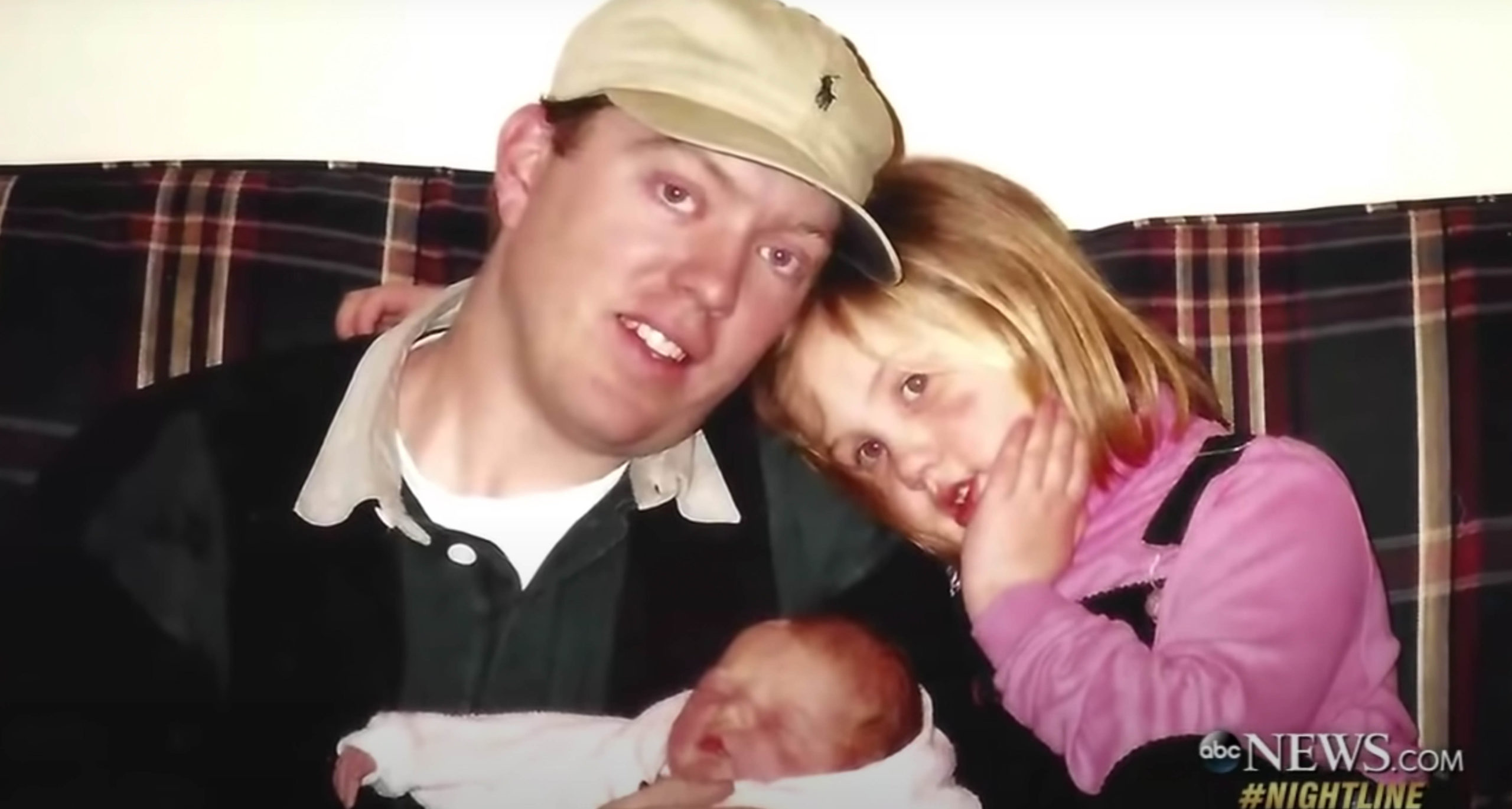
Patrick suffered third degree burns on his face and scalp. He also sustained burns to his head, neck, and upper torso. The fire also claimed his ears, lips, most of his nose, and even most of his eyelid tissue.
“I didn’t actually see myself until probably November. I got injured in September,” Patrick told Fox News. “They had cut a little pinhole in one of my eyelids because they had everything covered, skin graft. I looked in the mirror and all I could do, I said, ‘this is it? I can’t do this,’” he recalled.
Over the years, this man was forced to undergo over 70 surgeries, as well as other procedures. He couldn’t close his eyes and doctors were able to put together flaps of skin to protect his vision, but he was still facing the risk of going blind.
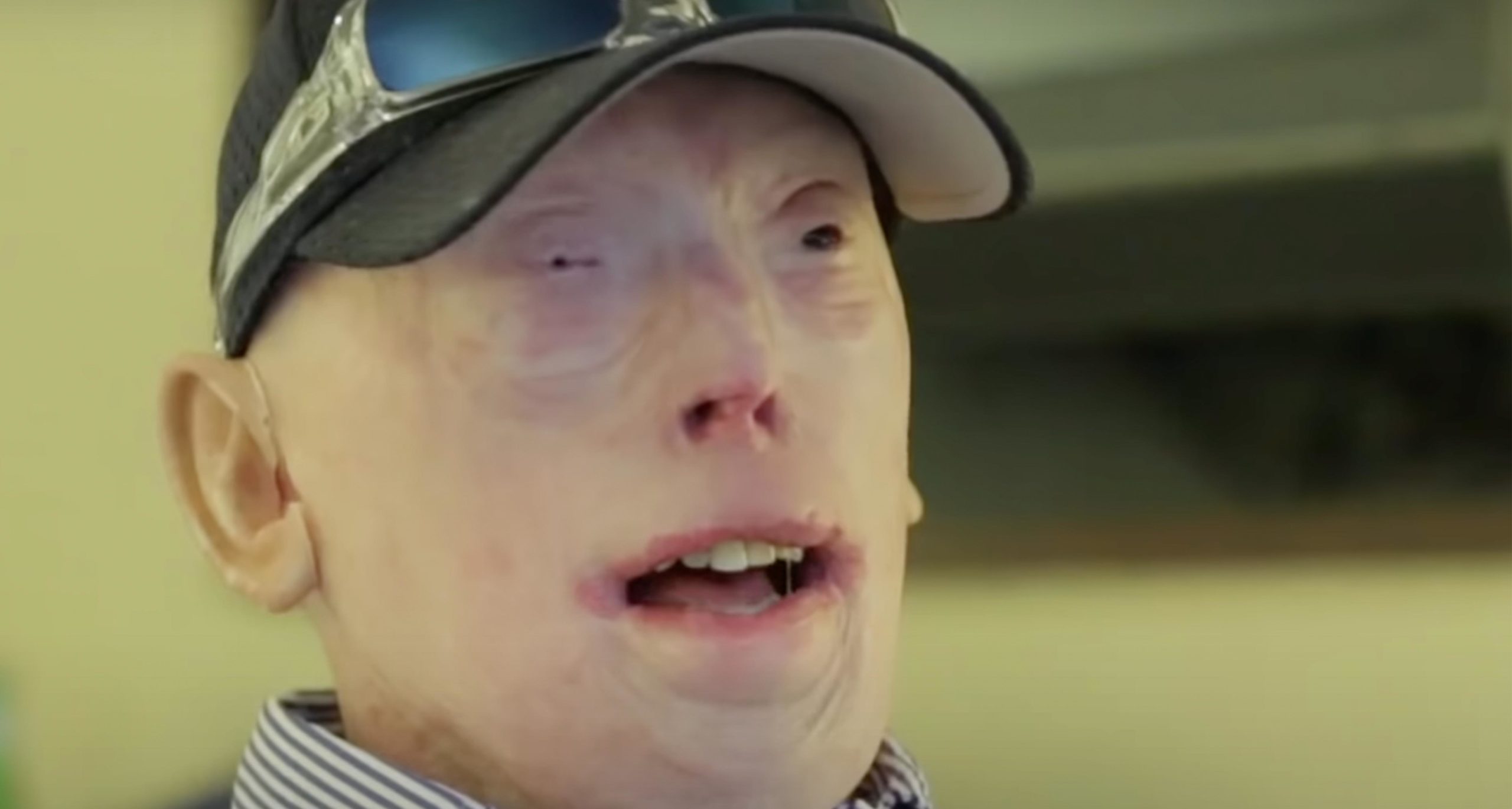
Patrick couldn’t eat without feeling excruciating pain. He just couldn’t get used to this life because he couldn’t look at himself in the mirror. Wherever he went, everyone starred at him, and he could barely stand being around people, even his children.
In order to hide and protect himself, Patrick wore sunglasses and a baseball cap all the time. He also had ear prosthetic.
“I had kids. It was just a tough time. I never got a day off from the injury. When you walk out in public, it was daily. And, you know, it’s just so — there’s no way to explain everything,” he told Yahoo! Sports.
“You go to the ball field, you have to prepare yourself for the kid that goes running off screaming.”
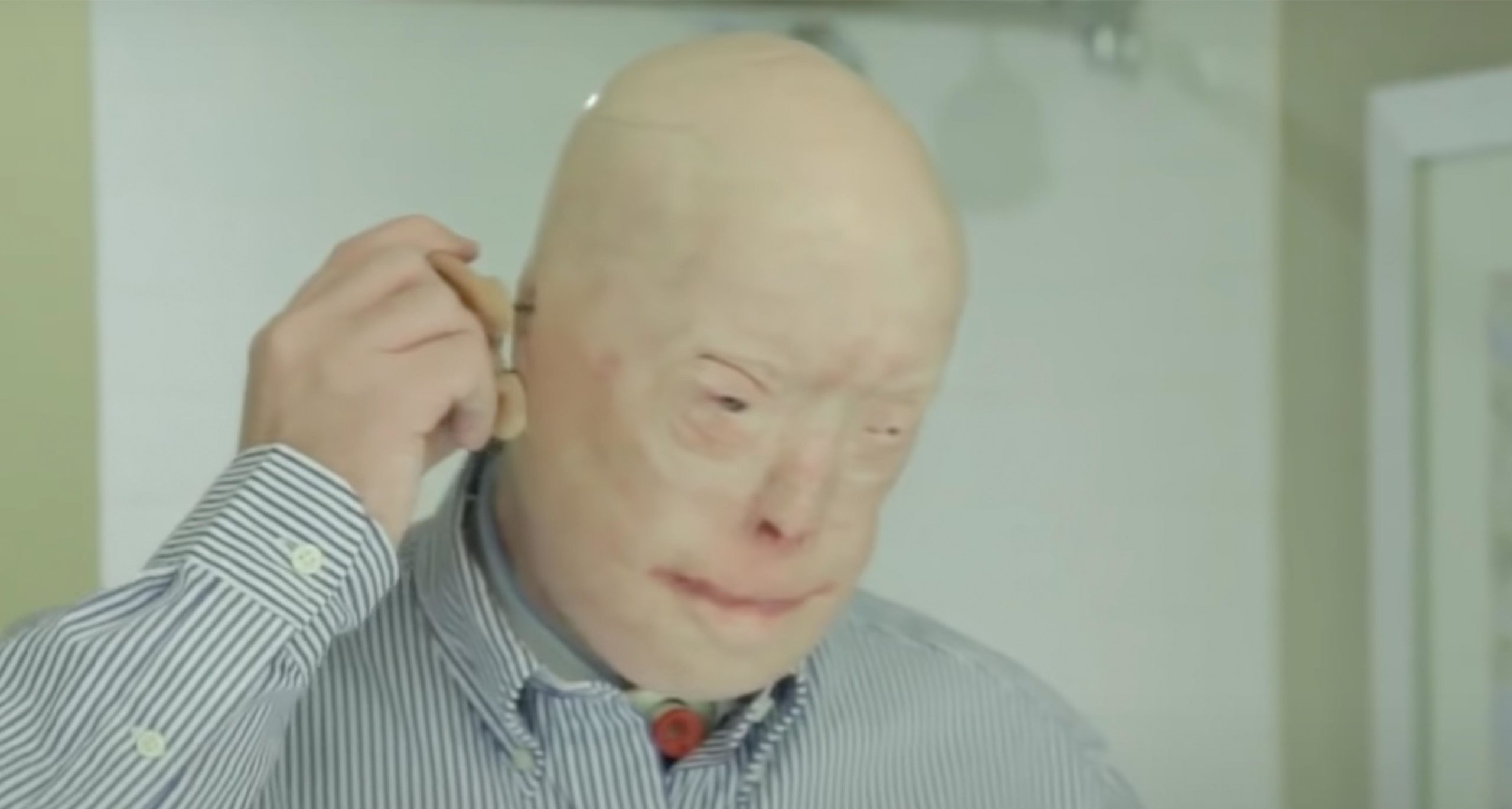
Years went by and Patrick lost hope of ever having a normal life. But then, French woman named Isabelle Dinoire received a partial face transplant after her face was severely disfigured by her pet dog. This procedure was revolutionary. It was the first ever of that kind. Surely, it gave a glimpse of hope to Patrick who at that point was truly struggling.
Patrick met doctor Eduardo D. Rodriguez from the NYU Langone Medical Center in New York who told him he would do the transplant surgery if they find a matching donor. It wasn’t easy, but one day, out of the blue, a donor appeared. LiveOnNY, a nonprofit that coordinates organ donations in the New York area, had found a match. The face Patrick was about to get belonged to 26-year-old David Rodebaugh who had sustained a massive head injury in a bike accident and had been declared brain dead.
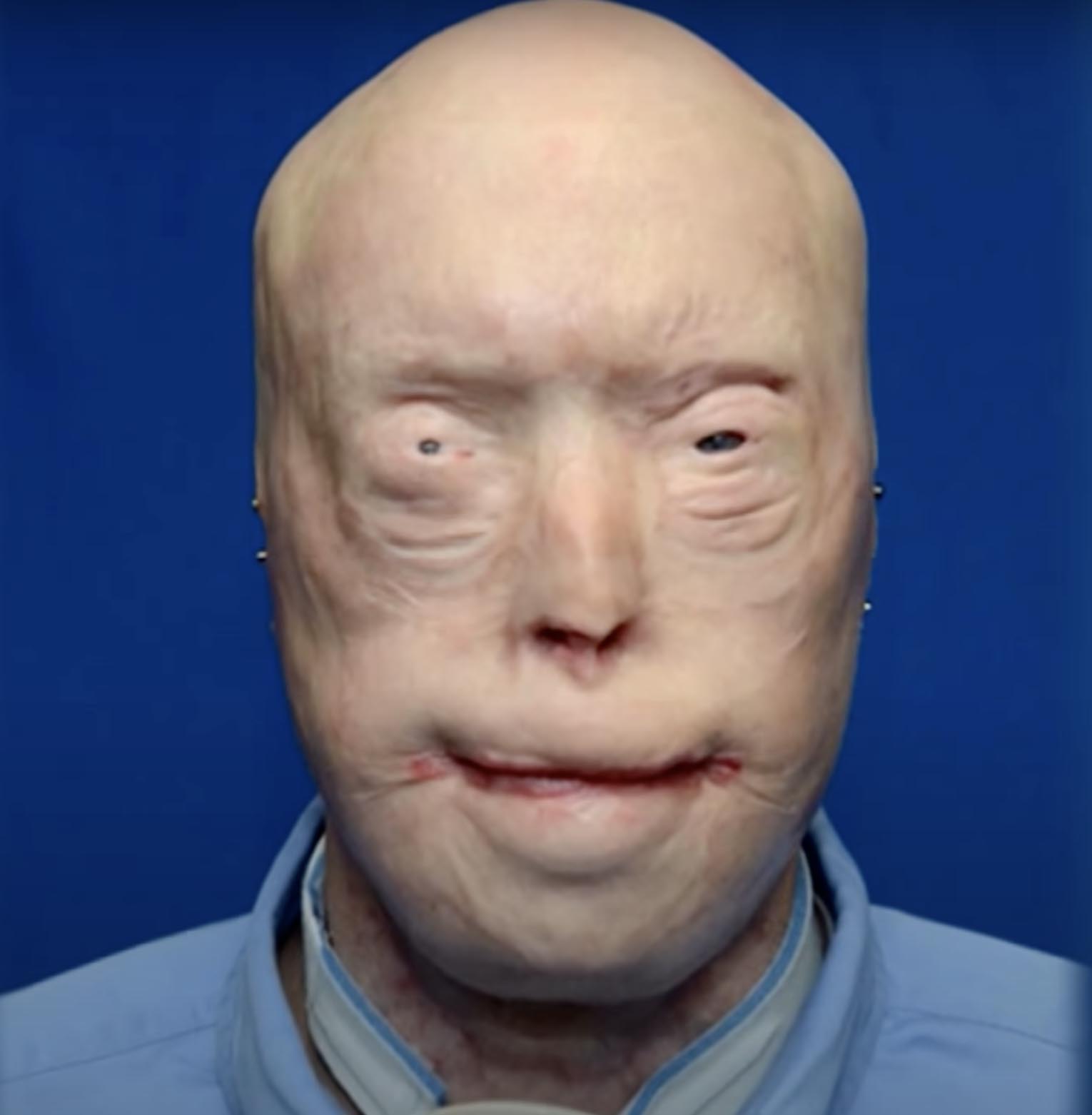
This young man’s mother, Nancy Millar, decided to donate her son’s organs, including his face. “I said, ‘You better save his face. He has the face of a porcelain doll.’ And he’s a donor — we had talked about it,” Millar told People.
The thought of someone receiving her son’s face meant that David would continue to live on through the people whose lives he was about to save, including Patrick’s.
“When I met Patrick, I saw this strength, this strong, manly, burly kind of energy in him — that David had,” Nancy recalled.
“David wanted to be a firefighter, an I knew if this guy was a firefighter — he was willing to walk into a fire to save people and risk his own life — then he had the strength that David had.”

Finally, the day of the transplant surgery had arrived. The procedure lasted for 26 long hours and was performed by a team of 100 professionals.
The risk was enormous and Patrick was given a 50/50 percent chance of survival. Luckily, it was a huge success. Patrick received a new face, scalp, ears, and ear canals. He also received eyelids which allowed him to blink naturally and save his vision.
“Everything in life has a risk,” Patrick told Time Magazine.
“When it’s your time to go, you’ll go—whether you’re walking down the street and get hit by a car or you’re lying on the operating table.”
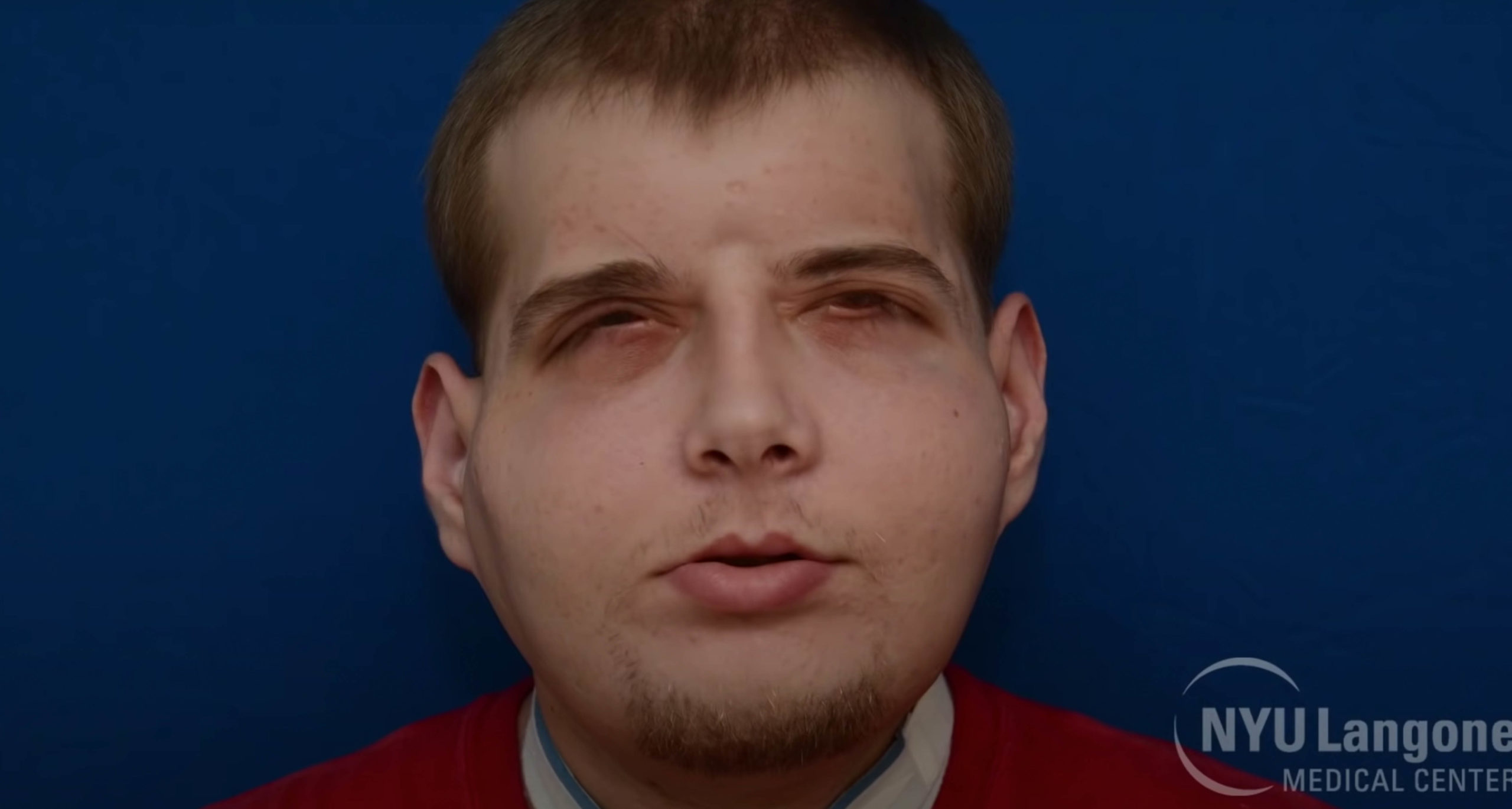
After he recovered from the swelling and he learned how to talk and swallow again, Patrick met his donor’s mother. Nancy only had one request, to kiss Patrick on the forehead.
“I said, ‘Can I kiss your forehead?’” Nancy said. “That’s the one thing I wanted to do because every night before David went to bed when he was little, I kissed his forehead.”
“I’ve been waiting a year to meet her. I’m just very grateful,” Patrick added. “Without her, it wouldn’t have been possible. It’s like she’s family. We connected that easily.”
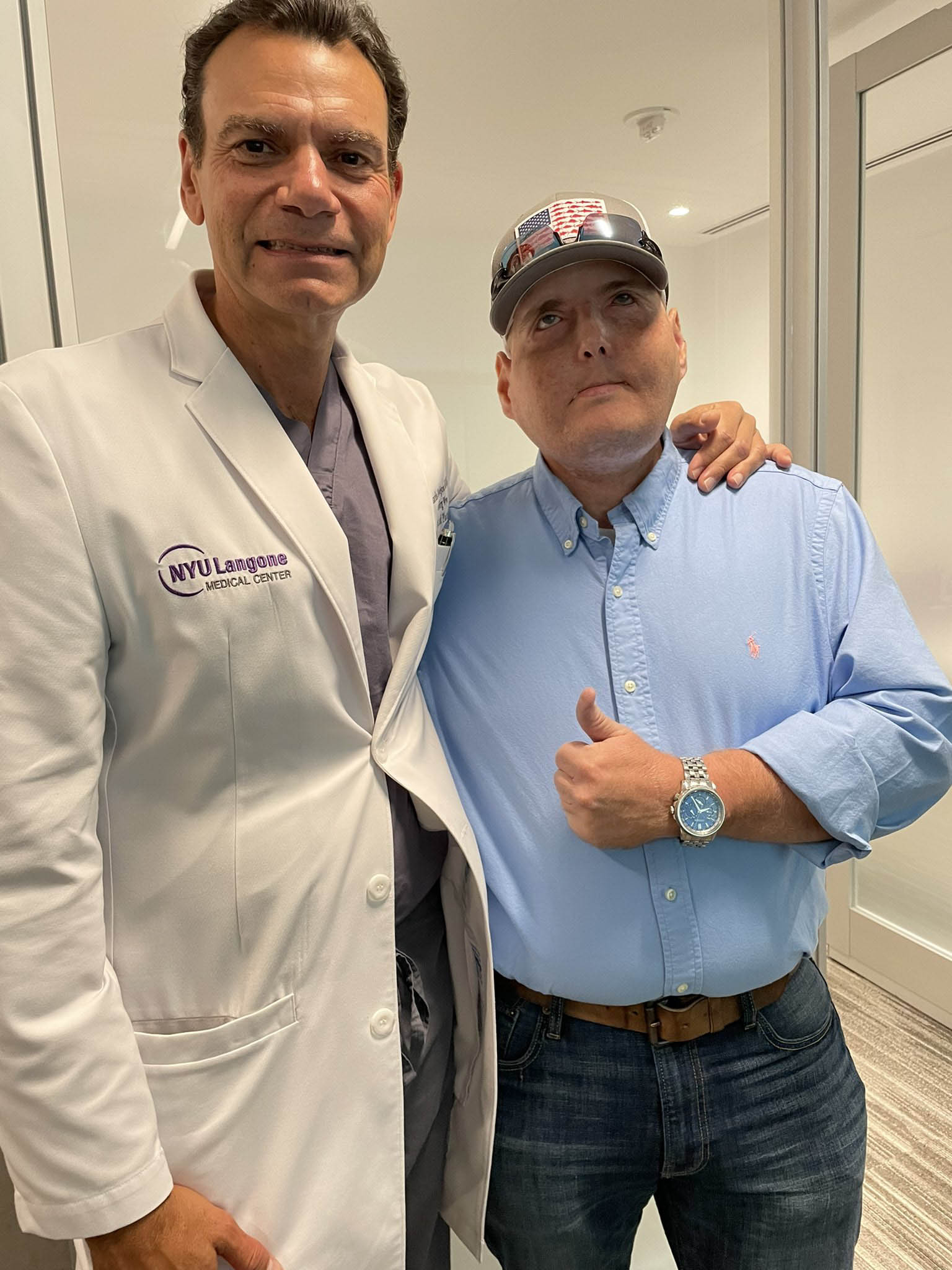
Ever since the surgery, Patrick is taking anti-rejection drugs that prevent his immune system from rejecting the face, but he’s thriving. He didn’t only receive a new face but a new life too.
Today, he is divorced and is working on a book which he hopes would serve as an inspiration to anyone who believes there is no way out from the situation they have found themselves in. “Because I want to show the world that you can have hope. I wouldn’t want people that were like me years ago to think that’s it, I have to live like this. You don’t. You can accomplish anything,” Patrick says.
His survival and his recovery are dubbed miraculous. Thanks to Nancy, Dr. Rodriguez and his team, and Patrick’s strong will, today, he is a happy man.
She said, Simon you are my favorite, push the ‘Golden Buzzer’. What happened after that stun everyone.

Sophie Fatu, a four-year-old, gains sudden fame for her amazing singing talent and deep emotional expression.
Her timeless performances captivate audiences with their profound wisdom, as she flawlessly delivers a captivating rendition of Frank Sinatra’s iconic song “My Way,” leaving everyone astonished until the very last note.Sophie impresses her listeners with her distinct and attractive voice, which has a unique clarity. Sophie shines because of her sincere passion and commitment to music.She expressed her love for Simon as a judge and shared a dream where she pictured him pressing the golden buzzer. Simon couldn’t control his laughter at first, but then he watched the video.



Leave a Reply